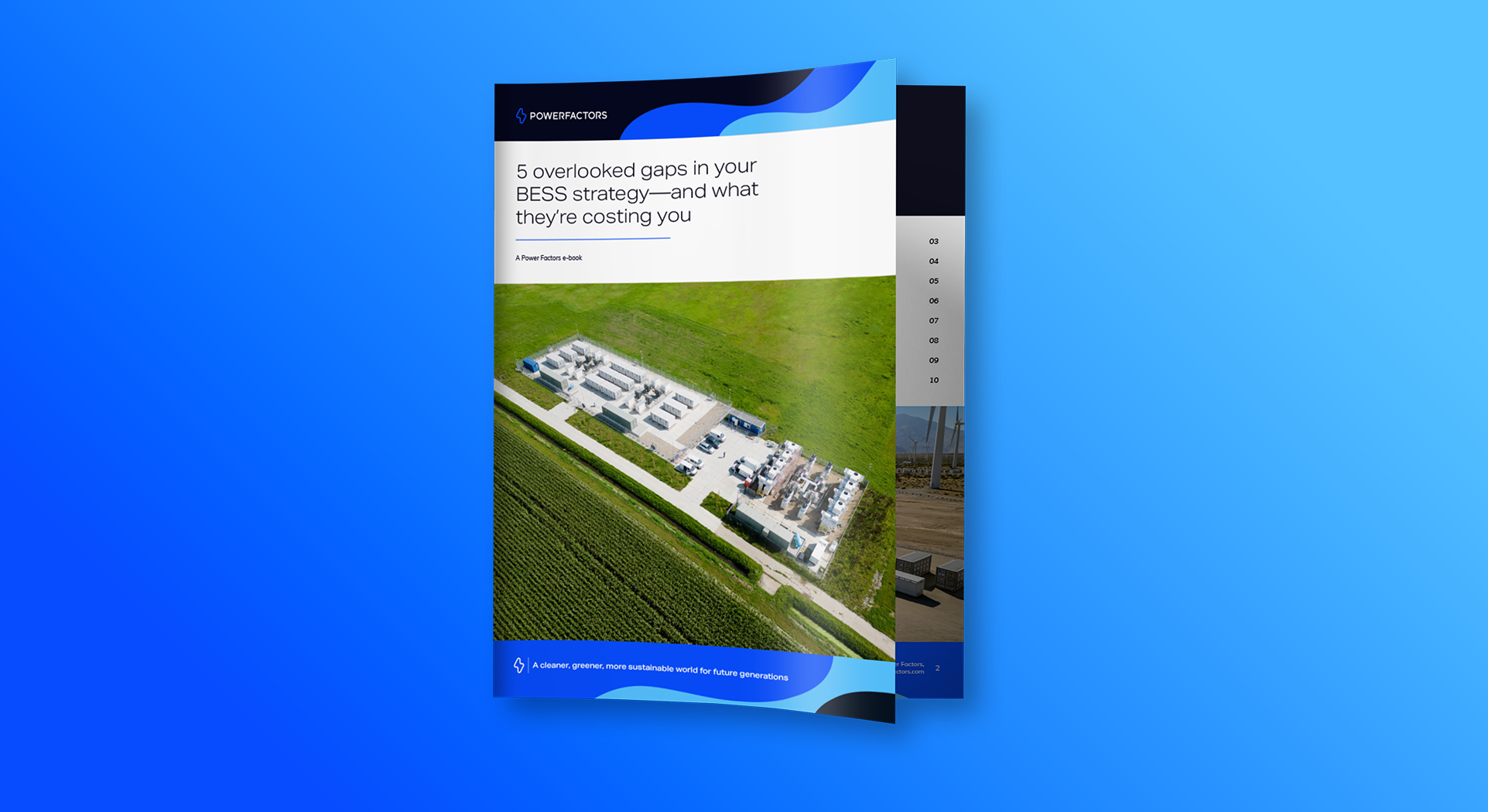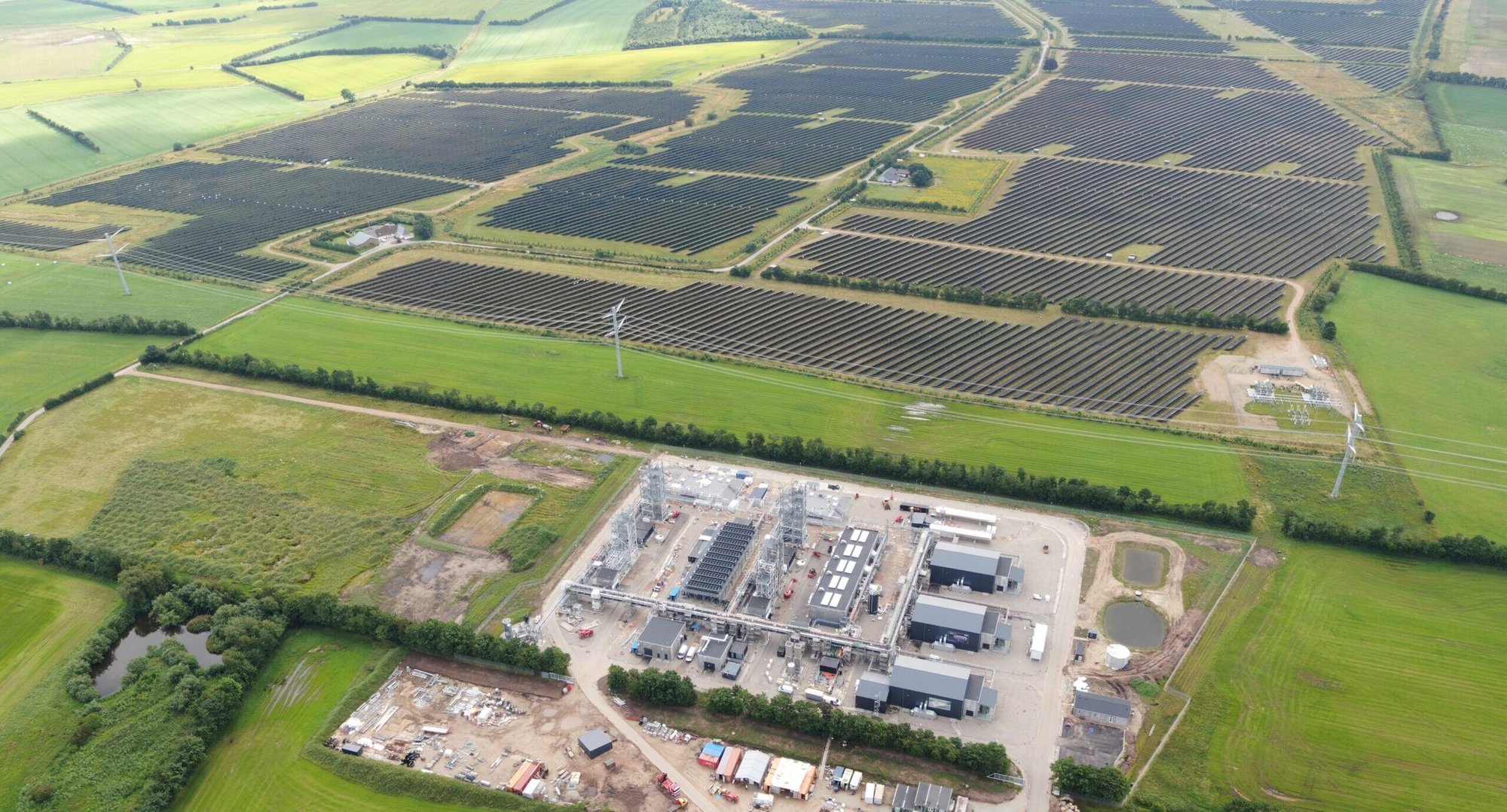GOT GENERATION AND STORAGE ASSETS? HERE’S HOW TO TAKE ADVANTAGE OF NEW REVENUE OPPORTUNITIES
Energy trading strategies are changing as owners take on shorter deals with more merchant risk. Here’s how digital systems can help you make the shift.
.jpg?width=1921&height=855&name=PowerfactorsHeader_Slider3%20(1).jpg)
Stay in touch
Subscribe to our newsletter for expert insights, company updates, and the latest in renewable energy management solutions.
Energy trading strategies are changing as owners take on shorter deals with more merchant risk. Here’s how digital systems can help you make the shift.
The rules of the renewable energy game have changed. Asset owners no longer can rely on long-term feed-in tariffs or power purchase agreements (PPAs) to provide certainty regarding expected revenue. Instead owners increasingly are exposed to market risk and the volatility of merchant power prices.
As a result, more companies are seeking new ways to generate predictable revenue — such as providing ancillary services that help grid operators. But thriving in this new reality requires sophisticated digital tools that help teams control energy generation and optimize their storage assets.

This is one of the reasons why Power Factors acquired Inaccess in June 2022: Inaccess specializes in control systems that support the energy trading strategies of owners and operators in the renewables sector. But what exactly are these emerging opportunities?
This past September, Solarplaza hosted a webinar called “Energy Trading Opportunities for Asset Owners” as part of its Summit Asset Management Europe 2022. In the webinar, Power Factors’ Ioannis Grammatikakis (formerly of Inaccess) shared tips for maximizing revenue from renewable energy assets, including tips for optimizing storage assets.
The evolution of energy storage creates additional ways to make money from renewable energy assets, said Ioannis: “There are a lot more ways to add and increase your revenues from renewable assets now [that] they are getting more well-integrated into the grid and the energy market. Also, the addition of battery energy storage and the combination of batteries with the wind and solar parks allows many more opportunities for new services from the energy sites.”
NEW REVENUE-BOOSTING OPPORTUNITIES
Ioannis identified six new opportunities for revenue generation available to renewable energy owners and operators:
- Frequency response and regulation: Grid operators will pay companies that provide ancillary services such as frequency response , which helps them manage ongoing frequency fluctuations and power plant failures.
- System services: Grid operators also need a range of other services to keep the system running. These include grid decoupling, black starts, virtual inertia, voltage support, and active power rate control.
- Capacity market and operating reserves: Asset owners can bid to provide backup power that grid operators could call on at short notice in response to spikes in demand or failures elsewhere in the system.
- Balancing market and demand response: Asset owners can also provide services that reduce demand to maintain the balance of supply and demand.
- Energy shifting and arbitrage: One major benefit of batteries is they enable operators to store electricity when prices are low and sell it when prices are higher. This can also help them avoid curtailment and negative power pricing.
- Day-ahead and intra-day markets: Batteries also enable asset owners to participate in day-ahead and intra-day energy markets more efficiently. This is the benefit of increased flexibility.

SOPHISTICATED TOOLS REQUIRED
But to take advantage of these new revenue-generating opportunities, owners and operators need a fully integrated asset performance management (APM) platform.
What does that look like? Here are the five key elements that you need in an APM platform to participate fully in more complex power markets:
- Service stacking and dispatch technology: Owners need to ensure their systems enable them to provide more than one service from their asset portfolio at any one time. This is called “service stacking,” and it relies on operators having the right control systems to take advantage.
- Energy and dispatch optimization: Owners need digital systems that provide them with real-time data and forecasts about current and future power demand. This can help show them when grid operators will need power to ensure a balance between supply and demand of electricity.
- Power price forecasting: This builds on the above by adding real-time power market and price data into the mix. This can make you aware of the energy arbitrage opportunities, including the likelihood of negative pricing.
- Market optimization: Your APM platform needs to give you the ability to switch between markets, but also show you how much energy you will have in your assets to share between them — and the financial impact of doing so. This helps you decide which of the many opportunities to pursue.
- Dynamic real-time virtual power plant (VPP) dispatch: Real-time data will underpin your decisions about which assets to deploy and when.
The fast-changing renewable energy market opens up exciting new opportunities for owners and operators of renewable energy assets. But to take full advantage of these opportunities, you need to make sure you have an integrated APM platform that offers you real-time data about your assets and the energy market along with advanced data-driven insights.
Want to learn more about how an integrated APM platform empowers you to take advantage of new revenue opportunities? We’re here to answer your questions!





